
The Price of Time: The Real Story of Interest
by
Edward Chancellor
Published 15 Aug 2022
Low interest rates had boosted investment, but the general quality of lending was poor. Furthermore, savings were moving out of banks into an opaque shadow banking system.13 Financial repression had tilted China’s economy away from consumption towards low-quality investment and fostered asset price bubbles. If financial deepening made the China miracle, financial repression threatened to undo it. HOW FINANCIAL REPRESSION WORKS Here’s how financial repression was implemented in China. Capital controls trapped savings within the country. Households had little choice but to deposit their savings at one of the large banks.
…
This was the West’s version of financial repression. It is, of course, the government creditors who are repressed. The experience of the United States and Europe after the Second World War shows how financial repression worked in practice. During the war years, the yield on long-dated bonds was capped at 2½ per cent, while Treasury bills paid less than half a per cent.3 The Federal Reserve Banks acquired bonds directly from the government. After the war, the Treasury continued holding down interest rates even as inflation climbed into double digits.4 Financial repression was to last more than a generation.
…
Sarah Binder and Mark Spindel, The Myth of Independence: How Congress Governs the Federal Reserve (Princeton, 2017), p. 136. 5. Belen Sbrancia estimates that financial repression reduced UK government debt by 170 percentage points (relative to GDP). 6. Russell Napier, ‘Capital Management in an Age of Financial Repression’, Orlock Advisors, 6 September 2016. 7. Russell Napier, ‘The Silent Revolution: How to Inflate Away Debt … with More Debt’, Orlock Advisors, 24 June 2020. 8. Carmen M. Reinhart et al., ‘Financial Repression Redux’, IMF Finance & Development, 48 (1), June 2011. The authors point out that over the previous four years, interest rates in 21 advanced economies had been negative in real terms for around half the time. 9.
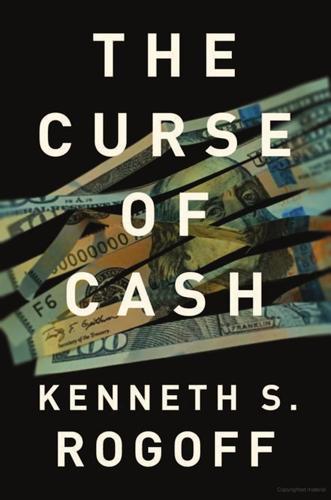
The Curse of Cash
by
Kenneth S Rogoff
Published 29 Aug 2016
A developing country under extreme fiscal duress and with a very small financial system might contemplate such a trade-off (as table 12.1 illustrates), but modern advanced countries really cannot, albeit many experienced extremely high inflation rates in the immediate aftermath of World War II.7 There is one way that an advanced-country government can reliably engage in partial default: through what is sometimes termed “financial repression.” Financial repression in this context means quite simply that the government rams debt down the private-sector’s throat without paying market interest rates. At low inflation rates, this tactic doesn’t accomplish very much very fast, but if the inflation rate is 8% and the government forces banks, insurance companies, and pension funds to hold large amounts of nonmarketable government debt at a controlled interest rate of 2%, then financial repression can bring the real value of government debt down very fast. If you think this doesn’t happen, think again: a combination of interest rate controls and inflation played a huge role in helping advanced countries bring their debt-to-income ratios down after World War II.8 The widespread view that advanced countries escaped their debts mainly through high growth ignores the massive implicit taxes that financial repression imposed on government debt holders.
…
Obviously, with negative rates, the government can default almost instantaneously on currency, but the size of bond debt is much larger, and that is the main issue. The most important concern probably relates to whether negative rates might create greater temptations to engage in severe financial repression. In classic financial repression, the government sets the interest rate at a positive level, then inflates and forces captive savers to accept a significantly negative real rate of interest. With the option of negative nominal rates, the government could collect large financial repression revenues without having any inflation. And yes, this temptation could be a problem for revenue-starved governments, and could in principle lead to significant distortions.
…
If you think this doesn’t happen, think again: a combination of interest rate controls and inflation played a huge role in helping advanced countries bring their debt-to-income ratios down after World War II.8 The widespread view that advanced countries escaped their debts mainly through high growth ignores the massive implicit taxes that financial repression imposed on government debt holders. It is true that the existing literature does not encompass the case where the government has the option of setting interest rates at a negative level, and it is an open question whether the additional option could make a difference. At first blush, it would seem the answer is no.
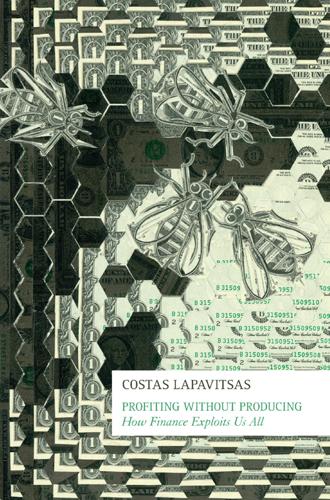
Profiting Without Producing: How Finance Exploits Us All
by
Costas Lapavitsas
Published 14 Aug 2013
The theoretical and ideological justification for tight controls over finance was provided by Keynes’s damning verdict on financial excess in the General Theory, calling for the ‘the euthanasia of the rentier’ as a valid aim of monetary and financial policy that would strengthen the role of productive capitalists.1 The regulation of finance was an integral part of the dominant Keynesianism of the period, summed up as ‘financial repression’.2 The system of financial repression had its roots in the great crisis of the 1930s which ushered in major regulatory changes with the aim of placing finance under control. The major institutional and legal change of the era took place in the US with the introduction of the Glass–Steagall Act in 1933, which separated commercial from investment banking as well as setting administrative limits on bank interest rates (under the so-called Regulation Q) and limits on the volume of bank lending against securities.3 The Glass–Steagall Act encapsulated the dominant approach to financial regulation until the gradual emergence of financialization had signalled the second great wave of financial ascendancy.
…
The major institutional and legal change of the era took place in the US with the introduction of the Glass–Steagall Act in 1933, which separated commercial from investment banking as well as setting administrative limits on bank interest rates (under the so-called Regulation Q) and limits on the volume of bank lending against securities.3 The Glass–Steagall Act encapsulated the dominant approach to financial regulation until the gradual emergence of financialization had signalled the second great wave of financial ascendancy. Financial repression was also spurred by the vast accumulation of public debt by mature countries in the course of the Second World War. The leading states of the world market, confronted with public debts that were held by both financial institutions and households, adopted administrative measures regulating interest rates, often forcing real interest rates into negative territory. Financial repression effectively worked as a subsidy to states allowing for the gradual reduction of public debt. The system of regulation applied to both money and finance, domestically as well as internationally.
…
Several ratios on bank balance sheets were administratively set, including reserves to deposits, and credit was often directed to selected industries and areas of economic activity. Thus, the backbone of financial repression was provided by controls over prices and quantities of credit, even if there were significant variations among developed countries. Second, there were controls on the range of functions that financial institutions were allowed to undertake. This aspect of financial repression again varied according to the historical and institutional trajectory of particular countries, but several features were in common across both mature and developing countries.
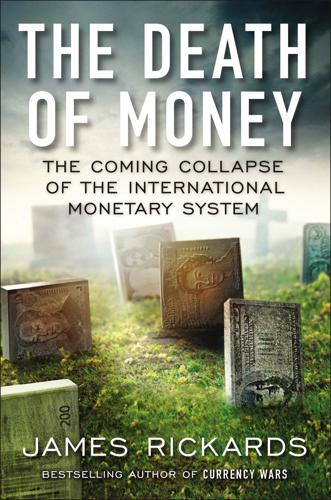
The Death of Money: The Coming Collapse of the International Monetary System
by
James Rickards
Published 7 Apr 2014
In normal markets, bond buyers would demand higher interest rates to offset inflation, but these are not normal markets. The bond market may want higher nominal rates, but the Fed won’t permit it. The Fed enforces negative real rates through financial repression. The theory of financial repression was explained incisively by Carmen Reinhart and M. Belen Sbrancia in their 2011 paper “The Liquidation of Government Debt.” The key to financial repression is the use of law and policy to prevent interest rates from exceeding the rate of inflation. This strategy can be carried out in many different ways. In the 1950s and 1960s it was done through bank regulation that made it illegal for banks to pay more than a stated amount on savings deposits.
…
This condition of modest negative real rates for a sustained period of time also worked its wonders on the debt-to-GDP ratio. During this golden age of financial repression, national debt declined from over 100 percent of GDP in 1945 to less than 30 percent by the early 1970s. By the late 1960s, the game of financial repression was over, and inflation became too prevalent to ignore. The theft of wealth from traditional savers had become painful. Merrill Lynch responded in the 1970s with the creation of higher-yielding money-market funds, and others quickly followed. Mutual fund families like Fidelity made stock ownership easy. Investors broke free of financial repression, left the banks behind, and headed for the new frontier of risky assets.
…
Historically the Chinese counted on large families and respect for elders to support them in their later years, but the one-child policy has eroded that social pillar, and now aging Chinese couples find that they are on their own. A high savings rate is a sensible response. But like savers in the West, the Chinese are starved for yield. The low interest rates offered by the banks, a type of financial repression also practiced in the United States, make Chinese savers susceptible to higher-yielding investments. Foreign markets are mostly off-limits because of capital controls, and China’s own stock markets have proved highly volatile, performing poorly in recent years. China’s bond markets remain immature.
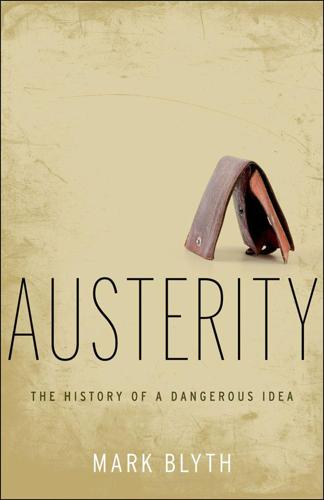
Austerity: The History of a Dangerous Idea
by
Mark Blyth
Published 24 Apr 2013
This creates an effective negative real interest rate on the bond such that the value of the debt shrinks over time. Financial repression is basically a tax on captive bondholders and it works best when you have banks over a proverbial barrel—such as when they are losing money and are dependent upon state funding, just like today. Policies such as this “played an instrumental role in reducing or liquidating the massive stocks of debt accumulated during world war two.”37 Reinhart and Sbrancia find that the “liquidation tax” generated from financial repression amounted to, in the cases of the United States and United Kingdom after World War II, the equivalent of 3 to 4 percent of GDP a year.38 Raising such funds would facilitate a significant debt reduction over time, and it would obviate the need for a corresponding period of extended austerity—austerity that wouldn’t work anyway since it would cause the debt to get bigger, not smaller.
…
A refusal by the United States to recycle foreign savings could be just as deleterious to the global economy as the excessive borrowing of foreign money, since the ability of the rest of the world to run a surplus against the United States, necessary because of its export-led growth models, would be compromised.23 Finally, financial repression, what Krugman implicitly advocates, does have some costs as well as benefits.24 I do worry about the debt, but for different reasons. I worry because most discussions of government debt and what to do about it not only misunderstand and misrepresent cause and effect, they also take the form of a morality play between “good austerity” and “bad spending” that may lead us into a period of self-defeating budget cuts.
…
Given this, there are two other ways out of the crisis in addition to the usual choices of inflation, devaluation, endless austerity (deflation), and default. The financial community will welcome neither of these two options, but it is not as if the other options on the table are great for them either. Those alternative choices are, first, what is known as financial repression, and second, a renewed effort to seriously collect taxes on a global scale. These efforts to get us out of this mess may not be popular, but one, or both, is coming. The End of Banking The story of the crisis reconstructed in chapters 2 and 3 can, and perhaps should, be seen in a bigger context.

The Age of Stagnation: Why Perpetual Growth Is Unattainable and the Global Economy Is in Peril
by
Satyajit Das
Published 9 Feb 2016
Inflation is below target levels in many countries. Austerity is proving self-defeating. Default or restructuring of debt would wipe out savings and trigger another financial crisis. With policy options limited, governments have turned to financial repression: policies to channel savings and funds to the public sector, lower borrowing costs, and avoid default on borrowings. Financial repression entails higher taxes, in combination with reductions in the level of state benefits or public services provided. Wealth or estate taxes may be reintroduced. Government spending is decreased through means-testing or co-payment schemes for public services, user-pays surcharges, and special levies.
…
Argentina seized pension funds and central bank foreign exchange reserves, and renationalized the YPF oil company, allowing the government access to US$1.2 billion of annual profits. Bolivia nationalized the power-grid company Transportadora de Electricidad. Indian authorities retrospectively clarified tax regulations, resulting in additional liabilities for foreign companies and investors. Financial repression also entails more explicit standover tactics. Many beleaguered governments delay or refuse to pay overdue bills to businesses, in a shell game that gives the appearance of reducing budget deficits and debt levels. In several countries, banks must report large cash transactions. Some require information on how the money withdrawn is to be used.
…
They justify the initiative on the basis of preventing tax avoidance, crime, and terrorism, as well as increasing efficiency and lowering costs. One commentator even argued that it would improve hygiene and prevent the transmission of diseases. But eliminating the freedom, privacy, and anonymity allowed by cash also enables control over the lives and access to the savings of individuals. It facilitates potential financial repression on an unprecedented scale. These measures damage the rule of law. In November 2011, Jens Weidmann, president of the German central bank, the Bundesbank, criticized the European Central Bank's decision to effectively finance governments in breach of EU treaties: “I cannot see how you can ensure the stability of a monetary union by violating its legal provisions.”3 The policies also punish frugality and thrift, and reward borrowing, profligacy, excess, and waste.
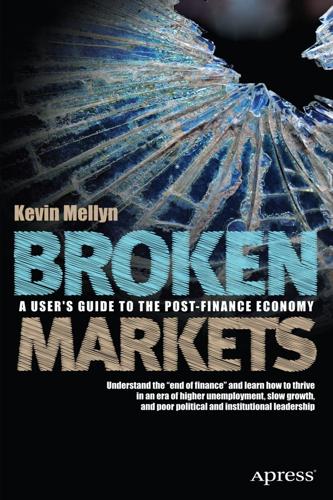
Broken Markets: A User's Guide to the Post-Finance Economy
by
Kevin Mellyn
Published 18 Jun 2012
The bad news is that it massively redistributes wealth from savers and investors to the government. Financial Repression Made Simple In a recent paper for the National Bureau of Economic Research (NBER), The Liquidation of Government Debt (NBER Working Paper 16893, March 2011) Carmen Reinhart and M. Belen Sbrancia make the case that between 1945 and the 1970s, almost all advanced countries practiced “a subtle type of debt restructuring,” financial repression, to achieve “sharp and rapid” reduction of public debt as a portion of their economies. Financial repression has three key pillars: • First, governments directly or indirectly set interest rates that are below what the market would set.
…
This regime leaves itself open to democratic crony capitalism at best. At worst, it leads to socialism or “corporatism”—the organization of society into collective interest groups such as big business and labor, all subordinate to the state (as with Italy and Germany and even some aspects of the New Deal). Financial repression is how banking works in China today, and once in place, it is very hard to change. The Banking Act of 1933 ushered in an age of financial repression (and so-called utility banking) in the United States that lasted almost 40 years, until the rise of the euromarkets in London during the 1960s and 1970s allowed US banks and their corporate customers to create a parallel unregulated dollar market outside of US jurisdiction.
…
So is their belief that so many successful entrepreneurs and executives lack their education and high mindedness. Markets often make the stupid and the swinish rich. This is obviously terribly unfair to really smart people who have the right academic credentials. I know this, as a holder of multiple Harvard degrees who has managed to escape becoming rich! Financial repression stealthily confiscates accumulated wealth and adds to governments’ ability to “make investments”—that is, spend public money on things (many of them legitimate, such as defense and basic research) that would not be funded by the market. The direction of credit and investment linked to industrial policy (and social policy) is simply how choices get made.

The Great Demographic Reversal: Ageing Societies, Waning Inequality, and an Inflation Revival
by
Charles Goodhart
and
Manoj Pradhan
Published 8 Aug 2020
Egypt Elderly care Elderly, suited for what work Elderly women Elephant diagram The elite Emerging Market Economies (EMEs) Emotional Quotient (EQ) Empathy Employers in Japan, maintain employment in recessions Employment Employment, lower within Japan Employment, over-full, strengthens bargaining power of labour Employment in manufacturing Employment in service sector in Japan, rising Emptiness Engels, Friedrich England Equilibrium real interest rate, determined by common factor Equilibrium real interest rate (r*) Equities, values of Equity/debt financing switch Equity finance, encourage Equity finance, need to increase Equity finance, rebalance towards Equity insiders Equity ‘insiders’, liability tapered after leaving Equity outsiders Equity prices Equity switch, encourage households and lenders to do Equity value maximization, short-run Equity values, in Japan, skyrocketing in 1980s Equity values, maximization in short run Equity, values of Eskom Europe Europe, less fiscal space Europe, nearer to upper bound threshold for taxation Europe, no funds to recapitalize banks European banks, cut back on cross-border lending European Central Bank (ECB) European Central Bank, independence enshrined in Treaty European countries European inflation, 1500–1700 AD European periphery European Union ‘Evergreened’ Excess capacity Excessive debt Excessive pay Excessive risk Executive Board Executive remuneration Expansionary monetary policy Expectations Expectations, anchored Expected inflation Expenditure cuts, politically difficult Export markets Exports, from Japan, functional relationships ‘Extend and Pretend’ External expansion, by Japanese corporates F Failure, appropriate sanctions for Family fragmentation Family, stretched by caring requirements Farmers Farmers, in UK are mostly old Farming Farm land prices Federal Reserve Bank Federal Reserve Bank of Kansas City Fertility rates Fiat money regime Finance Financial cycle Financial markets Financial markets, not pricing inflation Financial repression Financial repression, ending of Financial stability Financial Stability Report, by Bank of England Financial structure Financial Times Financial World Finland ‘Fiscal incontinence’, in deficit countries Fiscal deficits Fiscal dominance Fiscal innovation Fiscal policies, insufficiently contractionary, in future Fiscal policies, insufficiently expansionary, in past Fiscal policy Fiscal policy, insufficiently expansionary Fiscal redistribution Fiscal redistributive impact Fiscal stance, currently unsustainable Fiscal stance, in US, worse starting point Fiscal Sustainability Report (OBR) Fixed interest mortgages Fixed investment Fixed investment, being cut back Flattened Flemming, J.S.
…
Global capital was largely prevented from accessing China’s financial markets, while the early returns from China’s financial markets were not attractive enough for overseas investment to chase. As a result, global capital flowed into physical investment. Strict capital controls allowed China to maintain a competitive global advantage. That same strategy allowed financial repression to be pursued at home in order to direct the domestic pool of saving towards state-owned enterprises (SOEs) with government-owned banks as the conduit. China’s contribution to global disinflation of the last 35 years and its coming reversal needs to be understood through the lens of history and an understanding of its growth model in the global context.
…
Such a sustained intervention allowed the exchange rate to remain steady at a level that delivered China’s exports a considerable advantage. As a result, the trade balance (the difference between exports and imports) grew rapidly (Diagram 2.4). Diagram 2.4 Capital inflows were offset at the border, leading to huge foreign exchange reserves (Source IMF) Second, households faced financial repression at home and saw their savings effectively transferred from households to banks to SOEs. The implicit tax they paid was used to subsidise the growth of SOEs. How did China manage to do this? China’s interest rate market was effectively insulated from the rest of the world, thanks to the restrictions on capital controls.
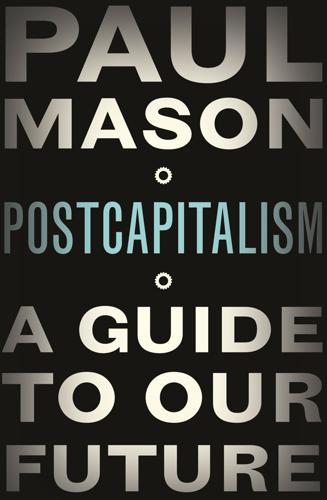
Postcapitalism: A Guide to Our Future
by
Paul Mason
Published 29 Jul 2015
The result created a form of capitalism that was profoundly national. Banks and pension funds were required by law to hold the debt of their own countries; and they were discouraged from making cross-border financial trades. Add to that an explicit ceiling on interest rates and you have what we now call ‘financial repression’. Here’s how financial repression works: you hold interest rates below inflation, so savers are effectively paying for the privilege of having money; you prevent them moving money out of the country in search of a better deal, and force them to buy the debts of their own country at a premium. The effect, as the economists Reinhart and Sbrancia have shown, was to shrink the combined debts of the developed world dramatically.17 In 1945, because of war spending, the public debts of the developed countries were close to 90 per cent of GDP.
…
State direction produced a culture of science-led innovation. Innovation stimulated high productivity. Productivity allowed high wages, so consumption kept pace with production for twenty-five years. An explicit global rules system amplified the upside. Fractional reserve banking stimulated a ‘benign’ inflation which, combined with financial repression, forced capital into productive sectors and kept speculative finance marginal. The use of fertilizers and mechanization in the developed world boosted land productivity, keeping the cost of inputs cheap. Energy inputs were, at the time, also cheap. As a result, the period 1948–73 unfolded as a Kondratieff upswing on steroids.
…
In fact, 1973 can best be understood as a classic phase change on the Kondratieff pattern. It occurs about twenty-five years into the economic cycle. It is global in scope. It heralds a long period of recurrent crisis. And once we understand what caused the upturn – high productivity, explicit global rules and financial repression – we can understand how it became exhausted. The post-war arrangements had effectively locked away instability into two zones of control: relations between currencies and relations between classes. Under the Bretton Woods rules, you were not supposed to devalue your currency to make your exports cheap and boost employment.

MegaThreats: Ten Dangerous Trends That Imperil Our Future, and How to Survive Them
by
Nouriel Roubini
Published 17 Oct 2022
Flexibility limits financial repression. Suppose, though, that a dominant central bank digital currency emerges, cash and coins are phased out, and nominal interest rates go negative. The central bank might impose an interest charge—a financial repression tax, in effect—on billions of dollars in excess commercial bank deposits. As things currently stand, a commercial bank can convert the reserves to cash that earn a zero rather than a negative return and store them anywhere. But central bank digital currency cannot escape the central bank, removing the brake on financial repression. At a point impossible to predict, very negative rates might entrench a recession instead of easing it.
…
Curing debt crises is possible but most solutions require strong medicine and excruciating rehab. Bailouts inject vital cash in exchange for crippling concessions. Restructurings dislocate workers and pummel investors and still may not work. Inflation shrinks the real debt load over time but savings erode and costs soar. Capital taxation squeezes owners of real and financial assets. Financial repression hands the tab to a profligate financial sector adept at shifting the burden to everybody else. Austerity sounds prudent until it triggers a severe recession. Economic growth furnishes the only welcome solution, but its prospects are dimmest when debt smothers initiative. In this chapter, we will consider seven strategies and why so many end up making problems worse instead of better.
…
Sitting on top of towering debt with low interest rates restrains the inclination to raise rates, a step that would cause the value of bonds to fall. But those low rates encourage borrowing and reckless leverage, causing a bigger debt problem down the line. Alternatively, policy makers can impose “financial repression.” The mechanism is complex, but the bottom line answers the prayers of politicians who want to raise cash without riling too many voters. Governments direct large financial institutions to bail out small businesses, households, and even distressed banks. It amounts to a stealth tax on the financial sector.
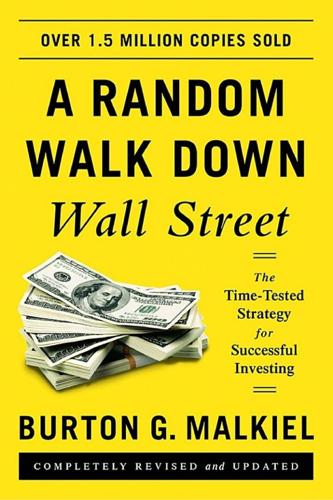
A Random Walk Down Wall Street: The Time-Tested Strategy for Successful Investing (Eleventh Edition)
by
Burton G. Malkiel
Published 5 Jan 2015
A FITNESS MANUAL FOR RANDOM WALKERS AND OTHER INVESTORS Exercise 1: Gather the Necessary Supplies Exercise 2: Don’t Be Caught Empty-Handed: Cover Yourself with Cash Reserves and Insurance Cash Reserves Insurance Deferred Variable Annuities Exercise 3: Be Competitive—Let the Yield on Your Cash Reserve Keep Pace with Inflation Money-Market Mutual Funds (Money Funds) Bank Certificates of Deposit (CDs) Internet Banks Treasury Bills Tax-Exempt Money-Market Funds Exercise 4: Learn How to Dodge the Tax Collector Individual Retirement Accounts Roth IRAs Pension Plans Saving for College: As Easy as 529 Exercise 5: Make Sure the Shoe Fits: Understand Your Investment Objectives Exercise 6: Begin Your Walk at Your Own Home—Renting Leads to Flabby Investment Muscles Exercise 7: How to Investigate a Promenade through Bond Country Zero-Coupon Bonds Can Be Useful to Fund Future Liabilities No-Load Bond Funds Can Be Appropriate Vehicles for Individual Investors Tax-Exempt Bonds Are Useful for High-Bracket Investors Hot TIPS: Inflation-Indexed Bonds Should You Be a Bond-Market Junkie? Foreign Bonds Exercise 7A: Use Bond Substitutes for Part of the Aggregate Bond Portfolio during Eras of Financial Repression Exercise 8: Tiptoe through the Fields of Gold, Collectibles, and Other Investments Exercise 9: Remember That Investment Costs Are Not Random; Some Are Lower Than Others Exercise 10: Avoid Sinkholes and Stumbling Blocks: Diversify Your Investment Steps A Final Checkup 13. HANDICAPPING THE FINANCIAL RACE: A PRIMER IN UNDERSTANDING AND PROJECTING RETURNS FROM STOCKS AND BONDS What Determines the Returns from Stocks and Bonds?
…
The emerging economies are also growing faster. Hence, a diversified portfolio of higher-yielding foreign bonds, including those from emerging markets, can be a useful part of a fixed-income portfolio in a period of very low interest rates. EXERCISE 7A: USE BOND SUBSTITUTES FOR PART OF THE AGGREGATE BOND PORTFOLIO DURING ERAS OF FINANCIAL REPRESSION Extremely low interest rates present a daunting challenge for bond investors. All the developed countries of the world are burdened with excessive amounts of debt. Like that of the United States, governments around the world are having an extraordinarily difficult time reining in entitlement programs in the face of aging populations.
…
At the end of World War II, the United States deliberately kept interest rates at very low levels to help service the debt that had accumulated during the war. By doing so, the United States reduced its debt-to-GDP ratio from 122 percent in 1946 to 33 percent in 1980. But it was achieved at the expense of bondholders. This is what is meant by the term “financial repression.” One technique to deal with the problem is to use an equity dividend substitution strategy for some portion of what in normal times would have been a bond portfolio. Portfolios of relatively stable dividend growth stocks have yields much higher than the bonds of the same companies and allow the possibility of growth in the future.
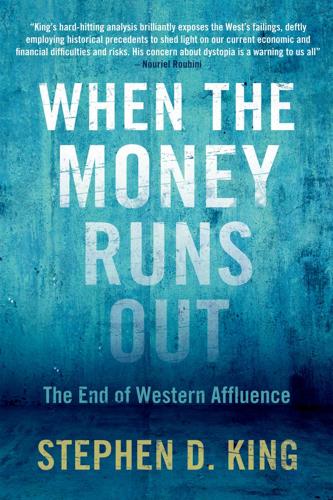
When the Money Runs Out: The End of Western Affluence
by
Stephen D. King
Published 17 Jun 2013
Populations are ageing, grey power is on the rise and no vote-seeking political party would advocate an excessive dose of inflation that might, in turn, destroy the real spending power of pensioners. There is, however, another alternative. Governments can jump to the front of the credit queue, pushing to the side other would-be borrowers. They can engage in ‘financial repression’, siphoning funds to themselves that might otherwise have gone to, for example, small and medium-sized companies.10 Quantitative easing provides one mechanism to allow them to do so. To be fair, this was not the intention. As I've already argued, the idea was to kick-start economic growth via quantitative easing, creating a virtuous circle of rising activity, higher tax revenues, falling social expenditures, reduced budget deficits and, hence, stable – or, even better, falling – levels of government debt.
…
That guarantee makes government bonds even more attractive to risk-averse investors. They end up following the central bank's lead. But, by implication, if government bonds are now more attractive, other assets are less so. The government ends up awash with credit, but, at the same time, the rest of the economy is starved of it. This is a form of financial repression, a way of ensuring that the government is able to rig credit markets to suit its own aims even if the economy as a whole may perform less well as a consequence. Quantitative easing may originally have been designed to improve economic performance but it has also allowed governments to raise debt on the cheap.
…
We know from Asia's experience in 1997–8 and from the eurozone crisis that creditors are, ultimately, a fickle bunch, prepared to give regimes the benefit of the doubt during the good times but more than happy to remove their support during the bad times, inevitably making the bad times even worse. No government wants to be faced with the prospect of not being able to pay the bills. To avoid default, governments will manoeuvre themselves to the front of the credit queue, pushing other possibly more worthwhile projects to one side in a bid to remain solvent. Acts of financial repression will become increasingly frequent. Our savings will increasingly be diverted to government interests, whether or not those interests really deliver a good rate of return for society. Admittedly, if companies themselves are hoarding cash – as the largest were in the years following the onset of the financial crisis – it might make good sense for governments to borrow more.

How Asia Works
by
Joe Studwell
Published 1 Jul 2013
In five years in the late 1980s, urban real estate prices quadrupled and stock prices tripled.14 It was as if the whole country decided to make up for three decades of developmental graft by going on a speculative binge. This was the period when the eldest son of Nishiyama Ko¯ichi, the diary-writing Niigata farmer, lost the family’s entire accumulated wealth playing the stock market. Financial deregulation, coming after a period of financial ‘repression’ that focused resources on developmental objectives, had an inevitable wealth effect as asset prices rose. Japan was suckered by this increase in paper wealth into thinking that it was different. The term nihonjinron, meaning ‘Japanese exceptionalism’, was used to justify sky-high asset valuations.
…
Ultimately, a finance policy based around control has diminishing returns, just as household farming and infant industry planning do. However, financial control that keeps money aligned with agricultural and industrial policies is essential in the formative stages of development. Retail savers and borrowers have to be asked to pay the price of what economists call ‘financial repression’ for as long as is necessary to promote basic technological upgrading. The real problem is that we understand so little about how and when nations should optimally move on to more open, deregulated financial systems. There is no doubt that Thailand and Indonesia and, before them, the Philippines were shunted into extremely premature deregulation.
…
Second, this repressed financial system in combination with capital controls has allowed the country to run a high debt level to support development without either creating domestic instability or suffering speculative international attacks. (China’s debt profile is less risky than Korea’s was in the 1990s because it does not involve borrowing from foreigners.) And third, the acid test of financial policy is how much acquisition of technological capacity can be achieved in industry before the window of opportunity afforded by financial repression closes. China has made considerable gains, but there is much more to be done. The main problem for China is that its structural rate of growth is beginning to slow as it gets richer and reduced population growth is cutting the supply of new labour to the workforce. This means the government will be less able to rely on growth going forwards to shrink its debts relative to the size of the economy.

The Elusive Quest for Growth: Economists' Adventures and Misadventures in the Tropics
by
William R. Easterly
Published 1 Aug 2002
The nominal interest rate minus the inflation rate is the real return that depositorsget on their savings. If this real interest rate is sharply negative, that will certainly lower the incentives to put money in the bank. People are much more likely to put their money abroad or into real estate or not save at all. A negative real interest rate policy is usually called ”financial repression,” because it represses financial savings in banks. 227 Governments Can KillGrowth 3.0% 2.0% 0) 2 D I p" 2 1.0% .e b U 2 .e 0 P 3 E til S 0.0% B .M 8 a -1.0% -2.0% <-20 <-l0 <-5 Budget balances as percentage of Figure 11.1 Budget deficits and per capita growth, 1960-1994 <O GDP >O 228 Chapter 11 Table 11.2 Examples of severely negative real interest rates Years Real interest (%) Country Argentina Bolivia Chile Ghana Peru Poland Sierra Leone Turkey Venezuela Zaire Zambia -2.2 1975-1976 1982-1984 -3.6 1972-1974 -2.9 1976-1983 -1.4 1976-1984 -8.6 1981-1982 -1.9 1984-1987 -3.1 1979-1980 -2.7 1987-1989 -6.0 1976-1979 1985-1988 Per capita growth (Yo) -69 -5.2 75 -1.8 24 -61 -35 -19 -33 -44 -35 -24 -34 Banks trying to keep savings with a negative real interest rate are in effect trying to carry water with asieve.
…
A negative real interest rate policy is usually called ”financial repression,” because it represses financial savings in banks. 227 Governments Can KillGrowth 3.0% 2.0% 0) 2 D I p" 2 1.0% .e b U 2 .e 0 P 3 E til S 0.0% B .M 8 a -1.0% -2.0% <-20 <-l0 <-5 Budget balances as percentage of Figure 11.1 Budget deficits and per capita growth, 1960-1994 <O GDP >O 228 Chapter 11 Table 11.2 Examples of severely negative real interest rates Years Real interest (%) Country Argentina Bolivia Chile Ghana Peru Poland Sierra Leone Turkey Venezuela Zaire Zambia -2.2 1975-1976 1982-1984 -3.6 1972-1974 -2.9 1976-1983 -1.4 1976-1984 -8.6 1981-1982 -1.9 1984-1987 -3.1 1979-1980 -2.7 1987-1989 -6.0 1976-1979 1985-1988 Per capita growth (Yo) -69 -5.2 75 -1.8 24 -61 -35 -19 -33 -44 -35 -24 -34 Banks trying to keep savings with a negative real interest rate are in effect trying to carry water with asieve. The evidence supports the view that sharply negative real interest rates areassociated with growth disasters. Real interest rates that are -20 percent or even morenegative go together with sharplynegative growth: -3 percent per capita per year. Interestingly, milder financial repression is not so disastrous. Real interest rates between -20 and 0 go together with modest but positive per capita growtha little below 2 percent per capita. Positive real interest rates are most favorable for growth, with a growth rate of 2.7 percent per capita.1° Table 11.2 shows some examples of severely negative real interest rates and the accompanying growth performance.
…
Ross Levine and I examined the income difference betweenEast Asia and Africa as explained by policies and other factors. For each policy, we calculated the difference in that policy between Africa and East Asia and then multiply it by that policy’s effect on growth. I apply the growth difference to initial income togetthe income differences. Africa’s higher government budget deficits, higher financial repression, and higher black market premium explain about half of the growth difference between East Asia and Africa over three decades. If policies truly docause growth, then Africa would havebeen $2,000 richer per person if African economic policies had been at East Asian levels (figure ll.2).39 On the brighter side, Latin American governments changed incentives for growth in the early1990s by correcting all of the above, and they gained an additional 2.2 percentage points of growth in response.40 They lowered inflation, lowered the black market premium, moved towardfree trade, and lifted repression of banks.
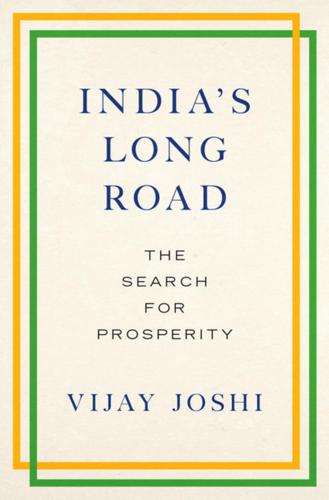
India's Long Road
by
Vijay Joshi
Published 21 Feb 2017
Other factors that impede transmission include a) interest rate subsidies that are given for various selected activities and b) the high level of the statutory liquidity ratio (SLR), which stipulates the minimum share (currently 21.5 per cent) of bank deposits that has to be placed in government securities.34 These are all features of ‘financial repression’ that clearly need to be phased out. But this would require coordination between the government and the RBI. For example, the SLR could not be reduced without reducing government borrowing, i.e. the fiscal deficit. The point to note here is that the smooth operation of inflation targeting depends on improving the transmission mechanism for monetary policy
…
This is because high inflation eroded the value of the debt. Now, India has a formal inflation target. If inflation were maintained in the next five years at the targeted 4 per cent, the burden of reducing debt would fall very much on fiscal adjustment proper. The RBI’s commendable efforts to maintain a positive real deposit rate, and to unwind financial repression, will tend to keep the government’s real borrowing rate positive as well, say at around 3 per cent, unlike the six inflationary years from 2008, when it was zero or negative. Reduction of the debt ratio will thus be more challenging than hitherto.57 Even so, it is surely high time that India stopped its past practice of repeatedly postponing genuine fiscal consolidation.
…
It is the case, however, that fiscal deficits are excessive; and it is also true that, in the present dispensation, there can be indirect monetary financing of deficits since the RBI may be required to conduct open market operations to prevent a rise in the government’s borrowing costs.67 Other manifestations of indirect fiscal dominance in an extended sense (or equivalently of ‘financial repression’) are a) government capture of bank deposits via the statutory liquidity requirement, b) administered interest rates on small savings, and c) interest rate subsidies for selected activities. All these factors constrain monetary policy and/or impede its smooth transmission. However, none of them are significant enough to make monetary policy powerless, and they should and could be reformed while the inflation targeting regime is in operation.

The Only Game in Town: Central Banks, Instability, and Avoiding the Next Collapse
by
Mohamed A. El-Erian
Published 26 Jan 2016
It also has not helped that, like other members of this specially formed crisis management grouping for the Eurozone, the central bank has had to operate under a rather clumsy, complex, and at times troubled “troika” arrangement—one that brings together three institutions (the ECB, the European Commission, and the IMF) that are subject to varying degrees of economic influence, have different mandates, and tend to differ in their operational modalities and even their mindsets. The list of institutional worries does not stop here. Having been subjected to a prolonged period of financial repression, savers have started to realize that, due to partial policy responses on both sides of the Atlantic, they are being sacrificed in attempts to rehabilitate banks and the economy. It is not just about nonexistent and in some cases negative interest rates on the main low-risk saving instruments, be they government bonds, savings accounts, or certificates of deposit.
…
Instead, as illustrated by the (albeit extreme) case of Greece, situations of excessive indebtedness can slowly slip into a vicious cycle in which inadequate growth aggravates debt overhangs, while at the same time the expanding overhangs themselves undermine growth further. To make things worse, the liquidity and solvency challenges become deeply intertwined and even harder to solve. By taxing creditors and subsidizing debtors through artificially low and repressed interest rates, the financial repression regime that central banks have been imposing can help alleviate debt overhangs. But it takes a long time—a very long time—for such a strategy to make a decisive breakthrough. In the meantime, it risks significant collateral damage and unintended consequences that, among other things, distort growth engines, as we have discussed earlier.
…
It can also encourage the sort of moral hazard that undermines responsible economic management over time. All of this leads to the fourth way—that involving orderly debt and debt service reduction (DDSR). DDSR is needed to overcome debt overhangs in situations where sufficient growth is not forthcoming, default would be too disruptive, and financial repression is not enough. Fortunately, history provides a guide on fruitful approaches. An example is the Brady Plan at the end of the 1980s/early 1990s, an issue that I worked on as an economist at the International Monetary Fund. Having spent many years arranging both public and private financing to highly indebted Latin American countries so that they could pay their creditors, including banks that would have faced severe difficulties otherwise, the international community came to the realization that bolder steps were needed if the continent were to resume growing properly.
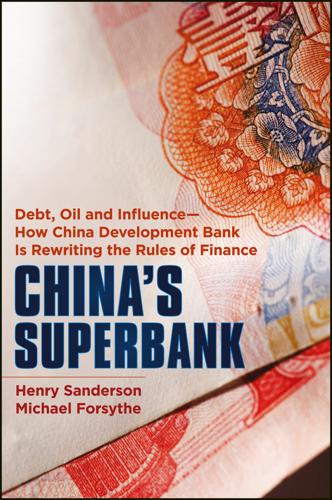
China's Superbank
by
Henry Sanderson
and
Michael Forsythe
Published 26 Sep 2012
In China, the rate depositors receive is often below inflation, and the lending rate has been kept below producer prices, meaning that bond market rates have also been kept artificially low. This is a classic example of “financial repression,” as economists describe it.72 As Carmen Reinhart and Kenneth Rogoff put it in their book on financial crises: “Under financial repression, banks are vehicles that allow governments to squeeze more indirect tax revenue from citizens by monopolizing the entire savings and payments system, not simply currency. Governments force local residents to save in banks by giving them few, if any, other options.
…
Hu Shuli, Kang Weiping, and Chen Huiying, “Interview with Chen Yuan,” Caijing, no. 5, March 5, 2004, http://topic.news.hexun.com/detail.aspx?classid=1&id=587998. 70. “Missing Funds Spark Probe of Bank Vice President,” Economic Observer, June 27, 2008, http://www.eeo.com.cn/ens/2008/0627/104454.shtml 71. Gao Jian, Debt Capital Markets in China (Hoboken, NJ: John Wiley & Sons, 2007). 72. Nicholas Lardy, “Financial Repression in China,” Policy Brief 08-8, Peterson Institute for International Economics (September 2008). 73. Carmen Reinhart and Kenneth Rogoff, This Time Is Different: Eight Centuries of Financial Folly (Princeton, NJ: Princeton University Press, 2009). 74. CDB 2010 Annual Report. Available on their Web site at www.cdb.com.cn 75.
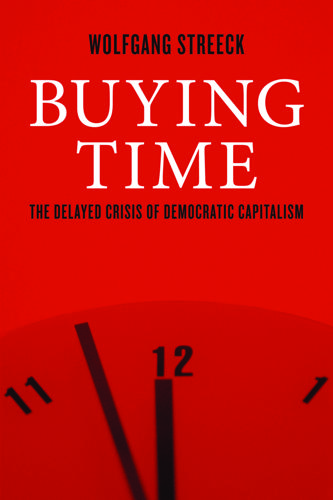
Buying Time: The Delayed Crisis of Democratic Capitalism
by
Wolfgang Streeck
Published 1 Jan 2013
If this is true – like all econometric ‘laws’, it should be treated with utmost caution – many developed economies are already incapable of growth. 73 See a few thoughts on the subject in chapter 4 below. 74 In combination with low interest rates, capital controls and high inflation, this may add up to a public debt reduction strategy. The technical name for it is ‘financial repression’ (C. Reinhart and M. Sbrancia, The Liquidation of Government Debt, NBER Working Paper No. 16893, Cambridge, MA: National Bureau of Economic Research, 2011). 75 Systems to regulate state bankruptcies have often been proposed. For creditors, they would limit the freedom of debtor states in the event of a payment default, although they could never be sure that governments would agree to play by the rules.
…
An example of successful camouflage of major intergovernmental transfers, or potential transfers, is the handling of the so-called TARGET2 balances of national central banks with the ECB.83 4) Insofar as the financial and fiscal crisis can be dealt with only through a general devaluation of public debt – mainly, though not only, in the absence of growth – this should be done gently and over as long a period as possible, so that large investors with a capacity to retaliate are able to adjust their portfolios in time to protect themselves against losses. Here too the technical expertise in the central banks and international organizations is in demand. It would be incumbent on the experts to devise ways for governments to liquidate debt they cannot clear through economic growth alone: that is, measures of ‘financial repression’ at the expense of savers (preferably small asset holders outside the financial sector), involving a combination of high inflation with low interest rates and pressure on banks and insurance companies to invest in government bonds.84 There are signs that preparations are nearly complete to launch this sort of policy as soon as the present crises are under control and the interests of the financial sector have been taken care of.
…
See European Monetary Union executive pay, 2.1, 2.2n66 exports, 1.1n13, 3.1, 3.2, 3.3, 4.1 passim ‘false needs’ (‘false consciousness’) Fama, Eugene family, 1.1, 1.2 fear, 1.1, 2.1, 3.1, 4.1; in bank customers and investors, 1.2n12, 1.3, 1.4n76, 2.2. See also panic Federal Reserve, 1.1, 2.1, 2.2, 4.1 federation of states (proposed). See interstate federation (proposed) Feldstein, Martin female employment. See women’s employment ‘fiat money’, 1.1, 4.1 financial marketeers. See Marktvolk ‘financial repression’, 2.1n74, 3.1 financing, pay-as-you-go. See pay-as-you-go financing financing of debts. See debt-financing Finland, 2.1, 3.1, 4.1 ‘flexibilization’, 1.1, 2.1, 3.1, 4.1 Fordism foreign direct investment France, 1.1n59, 2.1; election of 2012, 3.1, 3.2, 4.1n6; under Bretton Woods; employment/unemployment; EU relations, 3.3, 3.4, 3.5, 3.6, 3.7; government bonds; income inequality, 1.3, 2.2n10; inflation; internal diversity; monetary policy; public debt, 1.5, 2.3; strikes; taxation, 2.4, 2.5, 3.10n42; unionization rates; US relations, 4.4n26 Frankfurt School, itr.1 passim, 1.1, 1.2 passim, 1.3 Fritz, Wolfgang Germany, itr.1 (n), 1.1, 2.1n71, 2.2 passim, 3.1n18, 3.2n25, 3.3 passim; Bremen, 3.4; Council of Expert Advisors; debt ceilings; employment/unemployment, 1.2, 3.7n69; EU relations, 3.8n25, 3.9 passim, 3.10, 3.11, 3.12 passim, 4.1, 4.2, 4.3n18, 4.4; as exceptional (relatively immune to crisis), 1.3, 1.4; export industry, 1.5n13, 3.13, 3.14; government bonds; Greek relations, 2.3n83, 3.16n27; homogeneity/nationalism, 4.5, 4.6; income inequality, 1.6, 2.4, 3.17, 3.18; industrial democracy; inflation, 1.7, 1.8, 1.9; Italian relations, 2.5, 3.19n81, 3.20, 3.21; Merkel administration, 2.6n37, 2.7n81, 3.22n27, 3.23n59, 3.24n72, 3.25n76, 3.26, 3.27, 4.8; Neue Lander, 3.28 passim; private debt, 1.10, 1.11, 4.9; public debt, 1.12, 1.13n59, 1.14 passim, 2.8, 2.9, 3.29, 3.30, 4.10; public spending, 3.31, 3.32, 3.33; reunification, 1.15n6, 1.16, 3.34, 3.35, 3.36, 3.37, 4.11; Schröder administration, 2.10, 2.11n37, 3.38; ‘sociology of finance’ (World War I), 2.12; state of emergency legislation; strikes; taxation, 1.18n66, 2.13, 2.14n53, 2.15, 2.16, 2.17n37, 3.40; unionization rates; voter turnout decline, 2.18, 2.19, 2.20; Weizsäcker views, 2.21.
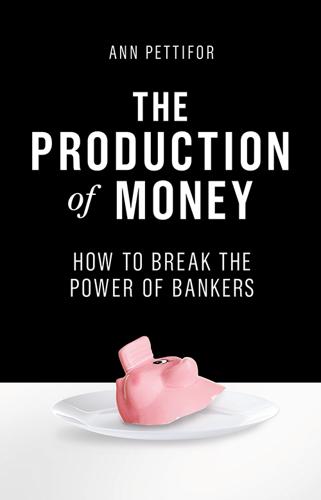
The Production of Money: How to Break the Power of Banks
by
Ann Pettifor
Published 27 Mar 2017
Until Keynes, finance had been jealously guarded by private authority. Today such public authority of the kind advocated by Keynes is rejected by mainstream economists, and even by many progressive economists who use the imprecise and pejorative notion of ‘financial repression’ to attack democratic management of the finance sector. Financial ‘repression’ is akin to regarding the emancipation of slaves as the repression of the rights of slave owners! On a more mundane theoretical and practical level, the theory of liquidity preference led to the devising of appropriate monetary and debt management arrangements to enable any such authority to set the rate of interest across the spectrum of lending.

The Default Line: The Inside Story of People, Banks and Entire Nations on the Edge
by
Faisal Islam
Published 28 Aug 2013
The situation is broadly described as ‘mutually assured destruction’. China would sustain massive collateral damage if, for example, it attempted to dump its bond holdings. In this situation, the USA does appear to have obliged China to become a forced lender, a type of bonded banker for its ever-growing debts. It is a form of international financial repression. China’s currency policy, in effect, holds down the living standards of its people, obliging them, and the nation generally, to lend its hard-earned dollars back to the USA. This arises because the dollar is the world reserve currency, and US Treasury bonds are a trusted form of liquid international mega-cash to be swapped with other nations, banks and pensions funds.
…
In the Franco era, the dictatorship practised a form of credit intervention that directed savings to investments declared as ‘qualifying’ by the Junta de Inversiones. This essentially forced Spanish caja savers to lend money to Franco’s government and preferred companies at below market rates. It was a type of tax, a form of financial repression that helped Franco’s treasury to avoid having to fund its deficits on the markets. The system only ended in 1977, two years after Franco’s death. At this point, Spain’s cajas began funding small business and housing loans. Although founded back in the 1830s, in proper credit-market terms Spain’s cajas were born at the same time as those young Spaniards whom they would plunge the deepest into debt.
…
As the crisis raged through the American, British and European financial systems, the Bank of England was pushing the boundaries of monetary policy further than any other central bank. Behind the imposing façade that glowers over Threadneedle Street, the Bank was preparing an experiment in ‘financial repression’, an experiment that was to test the balance between credibility and calamity. It was called quantitative easing. Every schoolchild is familiar with ‘The Magic Penny’, the morning assembly song: It’s just like a magic penny, Hold it tight and you won’t have any. Lend it, spend it, and you’ll have so many, They’ll all roll over the floor.

The Road to Ruin: The Global Elites' Secret Plan for the Next Financial Crisis
by
James Rickards
Published 15 Nov 2016
The international system of capital controls and fixed exchange rates overseen by the IMF and the United States was complemented by a regime of financial repression. At the end of the Second World War, the U.S. debt-to-GDP ratio stood at 120 percent. Over the next twenty years, the Federal Reserve and U.S. Treasury engineered a monetary regime in which interest rates were kept artificially low and mild inflation was allowed to persist. Neither rates nor inflation surged out of control. The slight excess of inflation over rates from financial repression was barely noticed by the public. Americans enjoyed the postwar prosperity, rising stocks, new amenities, and a congenial culture. Financial repression is the art of keeping inflation slightly higher than interest rates for an extended period.
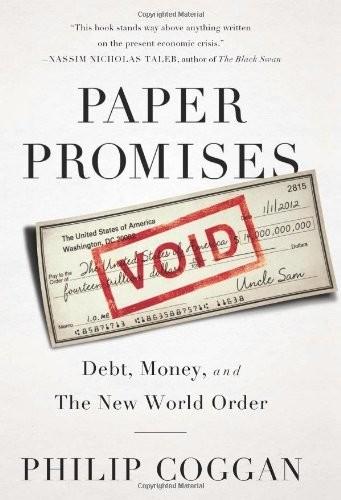
Paper Promises
by
Philip Coggan
Published 1 Dec 2011
Reinhart and Sbrancia reckon this policy may have reduced debt-to-GDP ratios by between three and four percentage points a year. It is not too much of a stretch to see the Basle III rules, agreed after the 2007 – 08 crisis, as a step down the road to financial repression. Banks are being forced to hold more capital, a policy that will lead them to own more government bonds. Pension funds also own more government bonds these days under the guise of ‘liability matching’. As Reinhart and Sbrancia remark, financial repression may re-emerge in ‘the guise of prudential regulation’. Russell Napier, a financial historian, takes a similar line, writing: It is time to bring back capital controls.
…
As has already been discussed, reducing debt via an austerity programme is unpalatable, and outright default is almost unthinkable. But governments did manage to reduce their debt burdens after the Second World War, under the auspices of the Bretton Woods system. In a March 2011 paper, Carmen Reinhart and Belen Sbrancia argue that the success of this debt-reduction programme was down to ‘financial repression’.12 Domestic investors such as pension funds were forced to lend to governments through regulations that restricted their investment freedom; the interest rate on this debt was then held at artificially low levels. The result was that real (after inflation) interest rates were negative for roughly half the time between 1945 and 1980; investors were coerced into losing money.
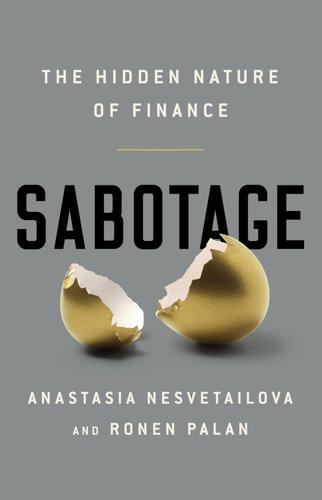
Sabotage: The Financial System's Nasty Business
by
Anastasia Nesvetailova
and
Ronen Palan
Published 28 Jan 2020
The regulatory environment that was established across the advanced industrialized world is commonly remembered (and romanticized) as a system that prioritized what many consider the ‘real economy’ over finance, and welfare over markets. This view has become so well entrenched that the two postwar decades are sometimes referred to as the era of ‘financial repression’,1 an era dominated by manufacturing and productive capital that kept speculative finance at bay. Nostalgically, the short-lived Bretton Woods era is sometimes referred to as ‘the golden age of capitalism’. Whether or not that was a golden age, what seems to have been forgotten is that the financial regulations which kept the financial system stable were designed in the 1930s to tackle, first and foremost, the problem of sabotage head-on.
…
Telegraph, ‘RBS and Barclays should both be getting the jitters’, ‘Comment’, 28 July 2007, www.telegraph.co.uk/finance/comment/2813039/RBS-and-Barclays-should-both-be-getting-the-jitters.html. Tett, G., Fool’s Gold: How Unrestrained Greed Corrupted a Dream, Shattered Global Markets and Unleashed a Catastrophe, Abacus, 2009. Thornton, J., ‘The Financial Repression Paradigm: A Survey of Empirical Research’, Savings and Development, vol. 15:1, 1991, pp. 5–18. Treanor, J., ‘RBS facing £400m bill to compensate small business customers’, Guardian, 8 November 2016, www.theguardian.com/business/2016/nov/08/rbs-facing-400m-bill-to-compensate-small-business-customers.
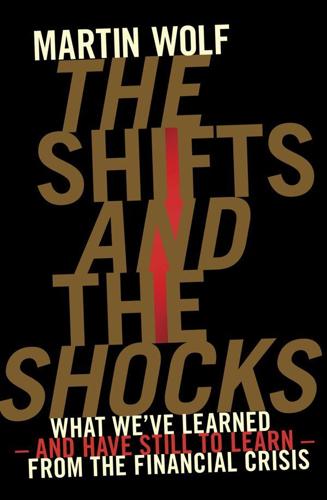
The Shifts and the Shocks: What We've Learned--And Have Still to Learn--From the Financial Crisis
by
Martin Wolf
Published 24 Nov 2015
The second was pursuit of export-led economic growth – the most successful of all development strategies.23 The outcome of the Asian financial crisis was to increase the incentive to pursue this strategy, particularly by the Asians themselves. The third was supporting a high-investment, high-profit, high-savings development strategy. According to Pettis, this strategy, pioneered by Japan, is characterized by: systematically undervalued currencies; relatively low wage growth and so low wage shares in national income; and financial repression ‘in which the state allocates credit and the central bank forces interest rates to below their natural or equilibrium rate’.24 Asian countries needed export surpluses to export the surplus output and surplus savings that were the direct consequence of these strategies. This was particularly true of China, in the 2000s.
…
De-leveraging can be achieved by growing out of debt, via a combination of real growth and inflation, or by paying down and restructuring debt. De-leveraging involves one, or often all, of these processes. How well the strategy of ‘growing out of debt’ works depends on the relationship between rates of interest and growth. The lower the former and the higher the latter, the better. That is why ‘financial repression’ – a deliberate reduction in the costs of debt by lowering returns to creditors – is common in a de-leveraging episode. Aggressive monetary policy lowers interest rates and supports nominal incomes. This is why the decision of central banks to move the short-term interest rate to near zero was right.
…
Research at the International Monetary Fund has suggested, for example, that the more expansionary the immediate macroeconomic policies, the smaller are the long-term losses in output.11 Yet another legacy is the mountains of private debt, mostly generated before the crisis, and public debt, generated after it. The lower the prospective economic growth, the more policymakers will rely on those four horsemen of post-crisis apocalypse: austerity, inflation, (financial) repression and (debt) restructuring. Since the crisis itself has damaged animal spirits, the likelihood is that trend growth will have been lowered for this reason alone. Moreover, while policymakers may want to drive the economy via another credit boom, they may find it hard to do so, even in the short term.
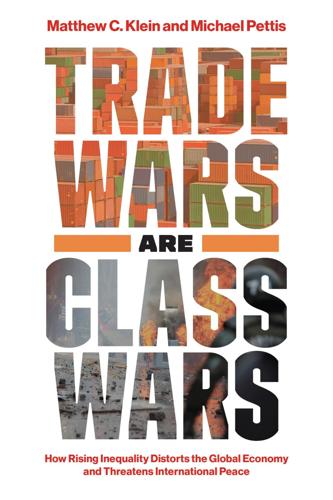
Trade Wars Are Class Wars: How Rising Inequality Distorts the Global Economy and Threatens International Peace
by
Matthew C. Klein
Published 18 May 2020
The share of Chinese GDP consumed by Chinese households fell by 15 percentage points between the late 1980s and the bottom in 2010. As of 2018, Chinese households still consume less than 40 percent of Chinese output—a lower ratio than in every other major economy in the world, by far.10 One of the least-appreciated mechanisms for suppressing consumption, and the most important, was financial repression. (Tellingly, however, the gradual elimination of financial repression over the past few years has only partially reversed China’s domestic imbalances.) There were few ways in China to save other than holding deposits in one of the government-run banks. Interest rates on those deposits were set at extraordinarily low levels, especially relative to growth.

Shocks, Crises, and False Alarms: How to Assess True Macroeconomic Risk
by
Philipp Carlsson-Szlezak
and
Paul Swartz
Published 8 Jul 2024
The backdrop for interest rates is complicated by the continuation of World War II–based monetary policy that was holding down rates. For example, in 1942—at the request of the Treasury Department—the Federal Reserve committed to pegging the interest rate on short-term Treasury bills to 3/8%, maintaining this peg until the Treasury–Federal Reserve Accord of 1951. John Mullin, “A Look Back at Financial Repression,” Federal Reserve Bank of Richmond, First Quarter 2021, https://www.richmondfed.org/publications/research/econ_focus/2021/q1/economic_history. 4. Philipp Carlsson-Szlezak and Paul Swartz, “Think Trump vs. Powell Is Ugly? Try Jackson vs. Biddle for a Taxonomy of Political Pressure,” Sanford C.
…
This gave way to the antideficit stimulus of the early Clinton years, where reducing deficits led to reduced term premia and rates and therefore more stimulus, as discussed in chapter 10. 8. Ron Suskind, The Price of Loyalty: George W. Bush, the White House, and the Education of Paul O’Neill (New York: Simon & Schuster, 2004), 291. 9. Other stock effects, such as asset purchases and currency mismatches, will influence debt levels as well. 10. If financial repression or fiscal dominance takes precedence, the economy will underperform its potential as resources are poorly allocated and inflation will rise sooner or later and undermine economic health. 11. Philipp Carlsson-Szlezak and Paul Swartz, “10 Years On—Policy Effectiveness and the True Legacy of the Great Recession,” Sanford C.

Why Wall Street Matters
by
William D. Cohan
Published 27 Feb 2017
But when banks are being encouraged not to extend credit, or the price they have to pay for extending credit—on both the financial and the regulatory fronts—encourages them not to do so, then the economies of the world are condemned to zero growth, and that is basically what is happening in the United States, western Europe, and Japan, three of the world’s four largest economies. The whole world is struggling to get economic growth. “The reason that that’s happened isn’t because we had a financial crisis,” one senior Wall Street executive told me. “It’s because the way we decided to reform from this financial crisis created the shortage of capital and led to financial repression. It’s made it impossible for financial intermediaries to perform their normal role because we have regulators who are acting on behalf of legislatures and presidents and prime ministers of countries to get the financial institutions into such a position of liquidity and lack of ability to lend that it just made it difficult to start new businesses and to expand in a normal way.”
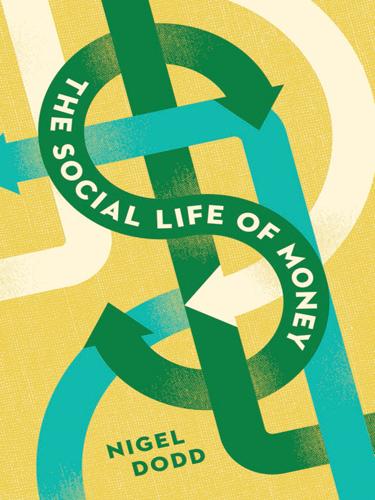
The Social Life of Money
by
Nigel Dodd
Published 14 May 2014
At the top of the hierarchy, the question of the value of world money is posed, but never satisfactorily answered: the fundamental contradiction that Marx identified within money is never resolved (Harvey 2006: 251). Institutions at the top of the hierarchy are able to exercise only a particular, negative form of power. This is the power of financial repression, whereby forms of discipline (such as austerity) are imposed upon those lower down. What these institutions cannot automatically do, however, is restore money’s underlying value. In order for this to happen, capital must find some way to “re-establish its footing in the world of socially necessary labour” (Harvey 2006: 293).
…
See also crypto-anarchy Anaximander, 145 Andersen, Gavin, 369–70 animal spirits, 45 anthropology, 7, 39, 164, 269, 390; cultural, 297; of money, 279, 285, 294, 295 Apollo, 136, 154, 155 Aquinas, Thomas, 314, 325, 327, 337 Aqoba, 365 Arab Spring, 2–3 arbitrage, 301, 303 Arendt, Hannah, 151 Argentina, alternative monies, 316; insolvency crisis, 69, 148, 392 Aristotle, 17, 27n17, 39n35, 223, 337; The Nicomachean Ethics, 93 Arrighi, Giovanni, 61n22 Arrow-Debreu general equilibrium model, 111n art, 17, 202 art auction, 202 art market, 201 assemblage, 238 asset relief program, 116 association, in Karatani, 84; in Simmel, 84n42 Atkins, Ralph, 206n39 Auster, Paul, 35 austerity, 90, 126–32, 133, 134; and debt, 388; and the destruction of capital, 88; and economic recovery, 21; economic and monetary policies in support of, 3, 5, 22, 88; effects of, 382; and financial repression, 69; forced, 75–76, 77; government programs in pursuit of, 2, 70, 78, 90, 388; and guilt, 256; and neurosis, 153, 159; the politics of, 92, 153; and restricted economy, 208 ‘Austrian’ theory of money, 5, 17, 362, 368 authority, market, 220 Autonomia Operaia, 72–73, 240–41, 246 Autonomism.
…
See state fiat money fiction, and economic expectations, 16; and language, 36; and the free market, 338; and money, 6, 235, 317; and monetary policy, 110; in Simmel, 317; and truth, 36 fictitious capital, 55, 56, 58, 62, 65, 68–69, 70, 83, 194, 243; Marx’s definition of, 57n16; in Ricardo, 59n finance, etymology, 201; versus money, 61–62, 66, 125; social study of, 295 finance capital, 60, 64, 68, 74, 232, 249 financial engineering, 124 financial expropriation, 79 financial innovation, 121 financial instability hypothesis, 117, 124 financial repression, 69 financial system, 3; and crisis formation, 69; expansion of, 114; relationship to GDP, 114. See also capitalism; Wall Street system financialization, 10, 36, 61n22, 66–67, 391; and banking, 114; and the Eurozone crisis, 79; of money, 245, 298; as privatized Keynesianism, 76 First World War, 50, 59, 103, 225, 245, 256, 356, 362 fiscal cliff, 90, 386 fiscus, 261–62 Fisher, Irving, 120n41, 314; on the paradox of thrift, 347; on stamp scrip, 314, 349 Fisher, Mark, 193 floating money, 191, 244 flow, 227, 232, 233–34, 244; and financial markets, 233n Fond-des-Nègres marketplace, 302 Foster, William, 347 Foucault, Michel, 25, 238, 239, 391; death of “man,” 389–90; desire, 229; on homo economicus, 390; on Nietzsche, 389–90, 391; The Order of Things, 228 Fourcade, Marion, 91 Fourier, Charles, 324 fractional reserve lending, 95, 111, 113, 116, 199n26 Frank, Thomas, 315 Frankfurt School, 322, 326–27 Franklin, Benjamin, 176 fraud, 113, 117n, 120, 132, 137, 199, 313, 368 Freddie Mac, 123 free credit, 352 free labor, 98 free market money, 360, 362 free money, 348 free trade 281 Freicoin, 348n, 349n, 370–71 French Revolution, 84, 355 Freud, Sigmund, 150, 228, 332, 334; Civilization and Its Discontents, 152; on money and saving, 151, 336 Friedman, Milton, 131, 330–31 Frisby, David, on Nietzsche, 136–37, 141–42; on Simmel, 137 Fromm, Erich, 14, 85n45, 345, 356, 372, 382; on economic democracy, 338–39; Escape from Freedom, 331; on having versus being, 315, 331–38; on hoarding, 336, 340–41, 350–51; on the humanistic utopia, 315, 333–34, 338–39, 374; on language, 332; Man for Himself, 331, 341; on Marx, 339; “Medicine and the Ethical Problem of Modern Man,” 340; on Messianic time, 335, 338; on money, 334, 339–40, 341, 346; on the Shabbat, 334–35, 338; on spiritual poverty, 334; To Have or To Be?
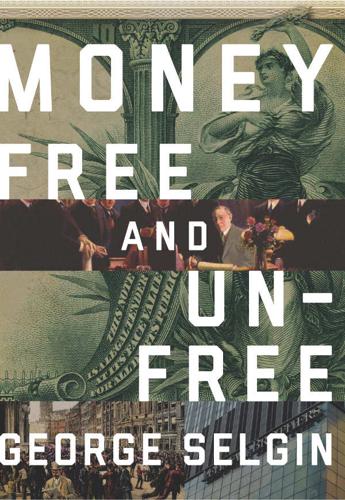
Money Free and Unfree
by
George A. Selgin
Published 14 Jun 2017
The “strong revealed preference in history for a sole issuer” is, fundamentally, the preference of fiscal authorities, not of consumers.2 Economic historians have, of course, often recognized fiscal motives behind specific monetary arrangements, especially those of ancient and medieval autocracies. Analysts of developing countries today have recognized that policies of “financial repression” aim at fostering “financial institutions and financial instruments from which government can expropriate significant seigniorage” (Fry 1988: 14; Giovanni and de Melo 1993). We go further in arguing that fiscal forces have typically shaped the industrial organization of money production, throughout history and across countries, and account for its major institutional features even in advanced democracies today.
…
Journal of Money, Credit, and Banking 27 (3): 713–26. Giffen, R. (1905) “Fancy Monetary Standards.” In Economic Inquiries and Studies, 186–77. London: George Bell and Sons. Giles, C., and Tett, G. (2008) “Lessons of the Credit Crunch.” FinancialTimes (February 11). Giovanni, A., and de Melo, M. (1993) “Government Revenue from Financial Repression.” American Economic Review 83 (4): 953–63. Gische, D. M. (1979) “The New York City Banks and the Development of the National Banking System, 1860–1870.” American Journal of Legal History 23 (1): 21–67. Glasner, D. (1989) Free Banking and Monetary Reform. New York: Cambridge University Press. ——— (1997) “An Evolutionary Theory of the State Monopoly over Money.”
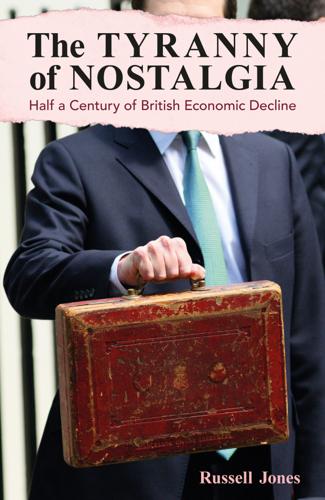
The Tyranny of Nostalgia: Half a Century of British Economic Decline
by
Russell Jones
Published 15 Jan 2023
Outward financial flows were greatly stimulated, particularly in the second half of the decade, when the current account balance swung sharply into deficit. Financial deregulation did not stop there, however. In the late 1970s the City of London had become increasingly uncompetitive. It was inward-looking and it operated in an old-fashioned, anachronistic way, while financial repression – the creation of captive markets through mechanisms such as artificial price ceilings, trade limitations, barriers to entry and other market controls − was pervasive. In global terms, it was becoming a backwater, especially when compared with New York. Since the collapse of the Bretton Woods monetary system in the early 1970s, the US’s major financial hub had enjoyed a period of increasingly innovative growth, as securitization burgeoned, as a welter of mechanisms to raise capital more cheaply than bank loans emerged, and as new risk management products (such as interest rate and currency swaps) flourished.
…
At the same time, the financial sector became more adept at circumventing the controls, and the authorities therefore faced a continual battle to minimize regulatory arbitrage and leakages into the non-bank financial sector. The system of controls became more complex, while the associated costs increasingly outweighed the benefits. As a consequence, the early iterations of macroprudential policy morphed into outright financial repression and the creation of captive markets that governments could exploit. Innovation and competition within the financial sector were stymied. Consumer choice was rationed. The efficient allocation of resources was impeded, and success in addressing one form of financial excess merely encouraged another.
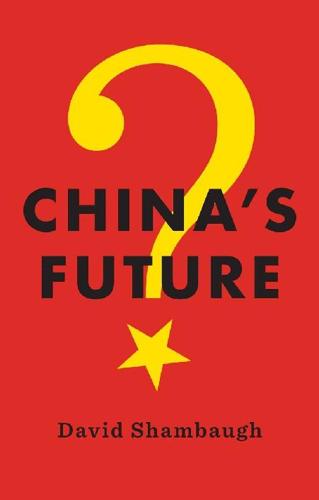
China's Future
by
David Shambaugh
Published 11 Mar 2016
Moreover, the banking system is concentrated in the four main state banks (which provide 50 percent of loans). These enormous banks all rank among the ten largest in the world by capitalization. Thus the government maintains the dominant position in the financial system. Economists refer to this as “financial repression,” a situation where the government artificially depresses deposit and lending rates and orders the state banks to increase or decrease loans in line with government planning priorities. This variability has given rise to an enormous “shadow banking” industry where individuals or businesses can turn to get quick cash when needed.23 One reason is because the large state banks favor state-owned enterprises and small- and medium-sized enterprises (SMEs) or individuals have had nowhere else to turn for capital.24 These unregulated loans have had several negative effects, including contributing to corruption at the local level and ballooning debt for local businesses and individuals.

Manias, Panics and Crashes: A History of Financial Crises, Sixth Edition
by
Kindleberger, Charles P.
and
Robert Z., Aliber
Published 9 Aug 2011
The collapse of the copper price from £80 to £38 a ton in 1889 almost took with it the Comptoir d’Escompte, which was saved by an advance of 140 million francs from the Bank of France, reluctantly guaranteed by the Paris banks.50 Financial innovation in the form of deregulation or liberalization has often been a shock. In the early 1970s Ronald McKinnon led an intellectual attack on ‘financial repression’, that is, the segmentation of financial markets in developing countries that led to preferential treatment of government borrowers that were involved in foreign trade, and large firms.51 The message appealed particularly to Latin American countries already influenced by the Chicago doctrine of liberalism.
…
Lauck puts the cost of the rescue operation at 25 million francs from the leading banks and 100 million francs from the Bank of France; see Causes of the Panic of 1893, p. 57. 51. Ronald I. McKinnon, Money and Capital in Economic Development (Washington, DC: Brookings Institution, 1973). 52. Carlos F. Diaz-Alejandro, ‘Goodbye Financial Repression, Hello Financial Crash’, Journal of Development Studies, vol. 18, no. 1 (Sept–Oct 1985), pp. 1–24. 53. Ronald I. McKinnon and Donald J. Mathieson, ‘How to Manage a Repressed Economy’, Essays in International Finance, no. 145 (Princeton, NJ: International Finance Section, Princeton University, 1981). 54.

The Captured Economy: How the Powerful Enrich Themselves, Slow Down Growth, and Increase Inequality
by
Brink Lindsey
Published 12 Oct 2017
The bottom line is that Big Finance has grown too big, and its excessive size and volatility are interfering with healthy economic development. It is certainly true that financial sectors can be too small. This is frequently a problem, and a severe one at that, for less developed economies. Governments in those countries have often pursued a policy of “financial repression” in which the combination of interest rate controls and high inflation results in negative real interest rates. This is a convenient state of affairs for governments that run chronic budget deficits, but it stunts the development of financial intermediation since savers are stuck with returns below the rate of inflation.
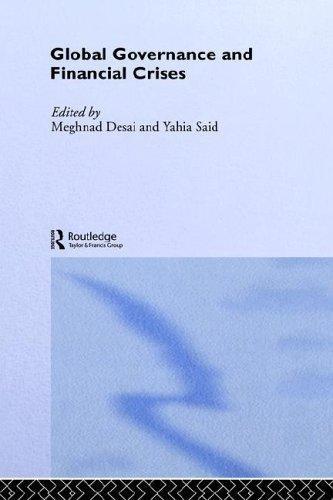
Global Governance and Financial Crises
by
Meghnad Desai
and
Yahia Said
Published 12 Nov 2003
Chandler, A. (1990) Scale and Scope: The Dynamics of Industrial Capitalism, The Belknap Press of Harvard University Press, Cambridge, MA. Demirguc-Kunt, A. and Detragiache, E. (1998) ‘The determinants of banking crises in developing and developed countries’, IMF Staff Papers, 45(1): 81–109. Diaz-Alejandro, C. (1985) ‘Goodbye financial repression, hello financial crash’, Journal of Development Economics, 19: 1–24. Furman, J. and Stiglitz, J. E. (1998) ‘Economic crises: evidence and insights from East Asia’, in Brookings Papers on Economic Activity, 2, Brookings Institute, Washington, DC, pp. 1–135. Gomez, E. T. and Jomo, K. S. (1999) Malaysia’s Political Economy: Politics, Patronage and Profits, 2nd edition, Cambridge University Press, Cambridge.
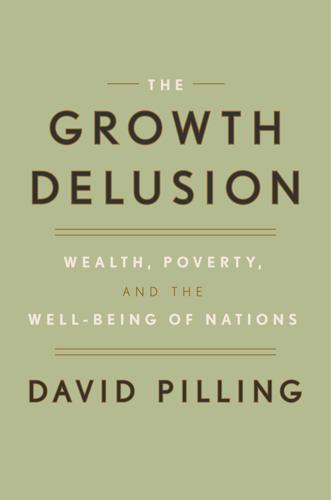
The Growth Delusion: Wealth, Poverty, and the Well-Being of Nations
by
David Pilling
Published 30 Jan 2018
Andrew Haldane, Simon Brennan, and Vasileios Madouros, “What is the contribution of the financial sector: Miracle or mirage?,” chapter 2 in The Future of Finance, The LSE Report, London School of Economics and Political Science, 2010. 12. According to The Banker magazine, reported in ibid. 13. China, like other Asian success stories before it, conducted what is known as financial repression by siphoning up savings and distributing them to favored industries through the state-owned banking sector. For years China ran huge current account surpluses, investing the money in US treasuries and the sovereign debt of other Western countries. 14. Kay, Other People’s Money, p. 1. It is worth noting that, in the upside-down world of banking, assets are not quite what you might expect.

A Brief History of Neoliberalism
by
David Harvey
Published 2 Jan 1995
The subsequent drive towards neoliberalization after 1980 entailed little material change in their impoverished condition. In the advanced capitalist countries, redistributive politics (including some degree of political integration of working-class trade union power and support for collective bargaining), controls over the free mobility of capital (some degree of financial repression through capital controls in particular), expanded public expenditures and welfare state-building, active state interventions in the economy, and some degree of planning of development went hand in hand with relatively high rates of growth. The business cycle was successfully controlled through the application of Keynesian fiscal and monetary policies.
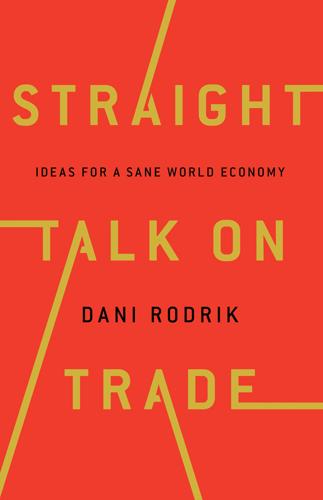
Straight Talk on Trade: Ideas for a Sane World Economy
by
Dani Rodrik
Published 8 Oct 2017
The Ethiopian government went on a spending spree, building roads, railways, power plants, and an agricultural extension system that significantly enhanced productivity in rural areas where most of the poor reside. Expenditures were financed in part by foreign aid and in part by heterodox policies (such as financial repression) that channeled private saving to the government. In India, rapid growth is also underpinned by a substantial increase in overall investment, which now stands at around one-third of GDP. Much of this increase has come from private sources, as the shackles on the business sector were gradually relaxed since the early 1980s.
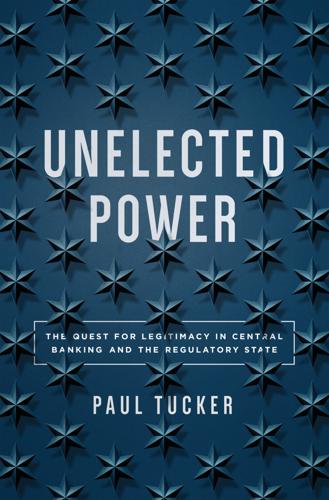
Unelected Power: The Quest for Legitimacy in Central Banking and the Regulatory State
by
Paul Tucker
Published 21 Apr 2018
Indeed, the contrast with the aftermath of the banking crisis, monetary disorder, and economic slump of the 1920s and 1930s could hardly be greater. Then, governments quickly turned away from globalization and central bank–centered macroeconomic policies. Nationalism was the order of the day—autarky, propped up by barriers to trade, controls on capital flows, and financial repression.7 When at the end of World War II the international economic order was reconstructed at Bretton Woods, New Hampshire, central banks were largely bystanders. In the aftermath, they became backroom advisers and agents as the West was rebuilt and the Cold War negotiated. How different things are today.
…
Indeed, the decades following World War II amount to a monetary morality tale. During the War, the regime was informally but overtly changed to prioritize cheap financing for the ballooning public debt. Afterward, trapped as the operational arm of government financial policy, the Fed increasingly sought to escape its role as the agent of financial repression and monetary financing, leading chair Marriner Eccles to wage a war of his own: one that saw him displaced from the chair, notes leaked revealing presidential deception, and culminating in the administration feeling betrayed when the Fed applied the letter of the famous 1951 Treasury-Fed Accord.6 It is said that former president Harry Truman once crossed the road to avoid William McChesney Martin, the man he had moved from the Treasury to the Fed chair in the firm expectation of retaining political control—only to find, like Henry II seven hundred years before, that his Thomas à Becket had changed sides.
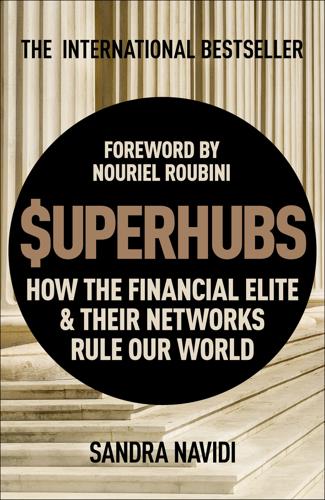
SUPERHUBS: How the Financial Elite and Their Networks Rule Our World
by
Sandra Navidi
Published 24 Jan 2017
While college graduates are 8 times likelier to live in the upper-income tiers—though often with a debt-albatross around their necks—those without a degree have virtually no chance of improving their station in life.11 As a consequence, Americans have come to realize that the American dream has been just that, a dream, and their typically optimistic outlook has given way to gloom, with only 14 percent foreseeing a better life for their children.12 The life expectancy of American whites has been falling as suicide rates are on the rise.13 As evidenced by a recognized measure called the Gini coefficient, the level of inequality in many parts of the world is dismal.14 Globalization Winners versus Globalization Losers To make matters worse, many governments, together with central banks and the financial sector, have resorted to using “accommodative monetary policies”—meaning expanding the overall money supply, or what is commonly referred to as “printing money”—to reduce debts and stimulate demand. In effect, this so-called financial repression acts as a tax on savers, transferring benefits from lenders to borrowers. Meanwhile, the 1 percent have benefited the most from these policies, pocketing 95 percent of income growth in the first three years after the crisis.15 In addition, the 1 percent have the expertise and means to play the global system to their advantage, an example of which is the use of tax havens like the Cayman Islands.

Red Flags: Why Xi's China Is in Jeopardy
by
George Magnus
Published 10 Sep 2018
The development of China’s bond market is being retarded by, for example, the existence of outward capital controls, inconsistent regulatory standards applied to its fragmented parts, the absence of the rule of law, and an unreliable credit rating system which tends to bunch ratings at the high end of the spectrum. Market discipline is weak when it comes to defaults and pricing systems, and liquidity tends to be low. With most financial participants expecting more significant deleveraging in the future, and financial repression keeping bond yields low, there is a cocktail of factors that explains why China’s bond market attracts less domestic capital than it should, and relatively few global investors. In spite of schemes to attract foreign investors, the foreign ownership share in March 2018 was a lowly 1.6 per cent.

13 Bankers: The Wall Street Takeover and the Next Financial Meltdown
by
Simon Johnson
and
James Kwak
Published 29 Mar 2010
There was a great deal more theft under the smoke screen created by very high inflation. Anders Aslund, Peter Boone, Simon Johnson, Stanley Fischer, and Barry W. Ickes, “How to Stabilize: Lessons from Post-Communist Countries,” Brookings Papers on Economic Activity 1996: 217–313. 38. Carlos Diaz-Alejandro, “Good-Bye Financial Repression, Hello Financial Crash,” Journal of Development Economics 19 (1985): 1–24. 39. The IMF’s voting structure is determined by countries’ quotas (their potential financial commitments to the IMF), which imperfectly reflect their economic and financial power. The G7 and its close allies control a majority of the votes at the IMF and the United States has an effective veto over any major policy decision. 40.
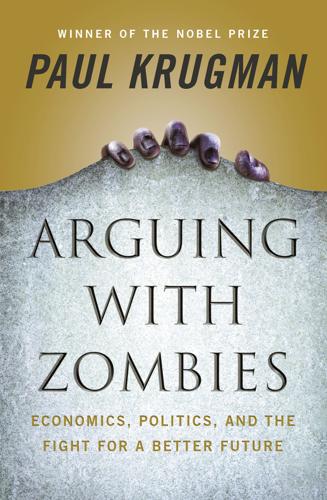
Arguing With Zombies: Economics, Politics, and the Fight for a Better Future
by
Paul Krugman
Published 28 Jan 2020
That’s not impossible: Britain ran surpluses that big for several decades after Waterloo. But it’s a lot to ask of a modern polity. Are we going to slash Medicare and Social Security? Are we going to impose a value-added tax, not to finance new programs, but simply to service the debt? It’s possible, but you do have to wonder whether the temptation to engage in some form of financial repression/debt restructuring/inflation would prevail. And more to the point, investors would wonder about that, pushing r–g even higher. The bottom line is that while functional finance has a lot going for it, it’s not the kind of axiomatically true doctrine that Lerner—and, I think, modern MMTers—imagined it to be.
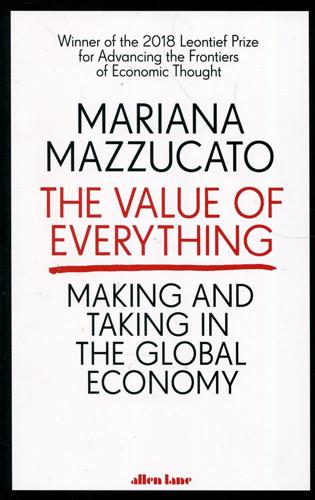
Value of Everything: An Antidote to Chaos The
by
Mariana Mazzucato
Published 25 Apr 2018
Countries aspiring to achieve US levels of prosperity have long been advised, especially by their multilateral creditors, to make ‘financial deepening' - the expansion and deregulation of banks and financial markets - a central part of their development strategy. At the same time, these creditors termed policies that restricted banks' growth - such as capping interest rates, or restricting cross-border lending - ‘financial repression', with the implication that financial liberalization was part of wider liberation. After 2008, as after previous regional financial crises (such as those that hit much of Latin America in 1982-3 and East Asia in 1997), the economists who had urged this liberalization asked themselves whether the unleashing of financial sectors had gone too far.

Investing Amid Low Expected Returns: Making the Most When Markets Offer the Least
by
Antti Ilmanen
Published 24 Feb 2022
Saver-investors have benefited from richening asset valuations, but the low rates may eventually help (typically younger) borrowers more than savers. The ultimate pain is ahead for savers if future inflation eats up the windfall gains and the real value of their savings, while policymakers may keep short rates low for long in the spirit of economy-supporting financial repression seen after WWII (e.g. yield curve control or other capping of bond yields even as inflation rises). 2.4. Decadal Perspective on Investment Returns I finish this chapter by complementing the forward-looking low expected return evidence with some backward-looking evidence, especially on the decade since my first book.

Connectography: Mapping the Future of Global Civilization
by
Parag Khanna
Published 18 Apr 2016
Here are some startling facts about how Americans relate to their own country: Sixty percent believe the American Dream is out of reach for themselves and their children, and 40 percent of Americans aged eighteen to twenty-four believe they will need to migrate abroad in search for work. Many of those surveyed in 2014 belong to a baby boomer generation whose retirement savings were wiped out in the 2008 financial crisis, while the subsequent financial repression (resulting from ultralow interest rates) slashed any hope of what’s left of their pensions recovering value. Record numbers of elderly are moving to Mexico, Panama, and elsewhere seeking more affordable sunset years. Yet more emigrants come from America’s unskilled youth who make up 50 percent of the unemployed.

The Euro and the Battle of Ideas
by
Markus K. Brunnermeier
,
Harold James
and
Jean-Pierre Landau
Published 3 Aug 2016
Hard money and austerity, the strategy followed by the United Kingdom in the immediate aftermath of World War I, and by Greece currently, is self-defeating, for deflation increases the real debt burden faster than any feasible amount of fiscal prudence can reduce it. The British experience after the Great Depression, or even more starkly in the aftermath of World War II, offers an alternative path: sharp devaluations and financial repression are believed to have facilitated a fast recovery—applied to Greece, of course, this would mean that the euro itself is the straitjacket holding up recovery. But if there are fundamental rigidities that limit adjustment, a devaluation would only provide a temporary stimulus. Leaving the euro would in that case carry with it costs that far outweigh the benefits of depreciation.4 Internal Commitments: Reputation and Institutional Design Reputation As an alternative to credible external commitment, a government may try to build a reputation for not defaulting either outright or through inflation.

The Third Pillar: How Markets and the State Leave the Community Behind
by
Raghuram Rajan
Published 26 Feb 2019
If so, it will be the first large country to do so. China needs a more appropriate balance. The party dominates the state and markets have been repressed. The old pathways to growth are no longer viable. The new ways to grow require more of an accent on innovation and efficient resource allocation, less on financial repression and corruption. They require decentralization, but with clearer rules at the regional level, not the exercise of discretion.21 All these, however, require the party to let go, to allow more freedom and independence to the market. The community will also have to be allowed more freedom and choice, both to sustain innovation and to maintain the separation between the state and markets.

Termites of the State: Why Complexity Leads to Inequality
by
Vito Tanzi
Published 28 Dec 2017
They are: (a) to protect the public; (b) to protect domestic producers from (unfair) foreign competition; (c) to protect the economic positions or the incomes of particular groups or sectors; (d) to replace some taxing and spending policies by regulations, because the latter are often administratively and politically easier to use; and (e) to provide some “internal subsidy” to particular activities in order to subsidize other activities, as discussed by Posner (1971) in an early and classic article on regulations. Regulations that are largely, or more obviously, substitutes for fiscal action can be called quasi-fiscal regulations. When used, they implicitly tax (penalize) some groups while subsidizing others. In this way they can broadly replace taxes and public spending. One classic example is “financial repression,” in which interest rates and the use of financial resources are regulated by the government. The regulations tax the lenders and subsidize the borrowers. Of course, not all regulations are quasi-fiscal, although, on close analysis, most regulations have some element of taxing and subsidizing.

Slouching Towards Utopia: An Economic History of the Twentieth Century
by
J. Bradford Delong
Published 6 Apr 2020
Tilt the economy’s price structure so that machines that embodied modern technological knowledge were cheap and foreign-made and luxurious consumption goods were expensive. Taking these steps would mean, of course, heavy, hidden taxes on labor, and especially on skilled labor. They would also mean financial repression relative to what “free-market” prices would have been: squeezing returns to savers, and shifting those returns to the industrial companies that accessed the savings, and to those who ended up owning them. And they would mean export surpluses via undervalued exchange rates—subsidies relative to Smithian prices to foreigners who purchased the exports—in the hope that the human- and organizational-capital gains, via learning by doing from producing exports successfully, would outweigh the cost of the implicit subsidies.